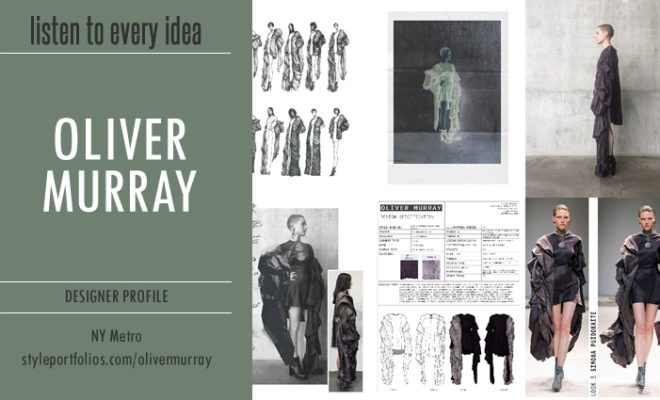
Talent Profiles
StylePortfolios: Oliver Murray

What is your employment status?
OM: Currently unemployed – finally on the other side of a painfully long immigration process that prevented me from working in US, that then fed into the global pandemic. Looking for opportunities in the New York City area with my new permanent residency and work permit.
What is your official job title?
OM: I was working as a Design and Production Assistant at a luxury womenswear brand in London.
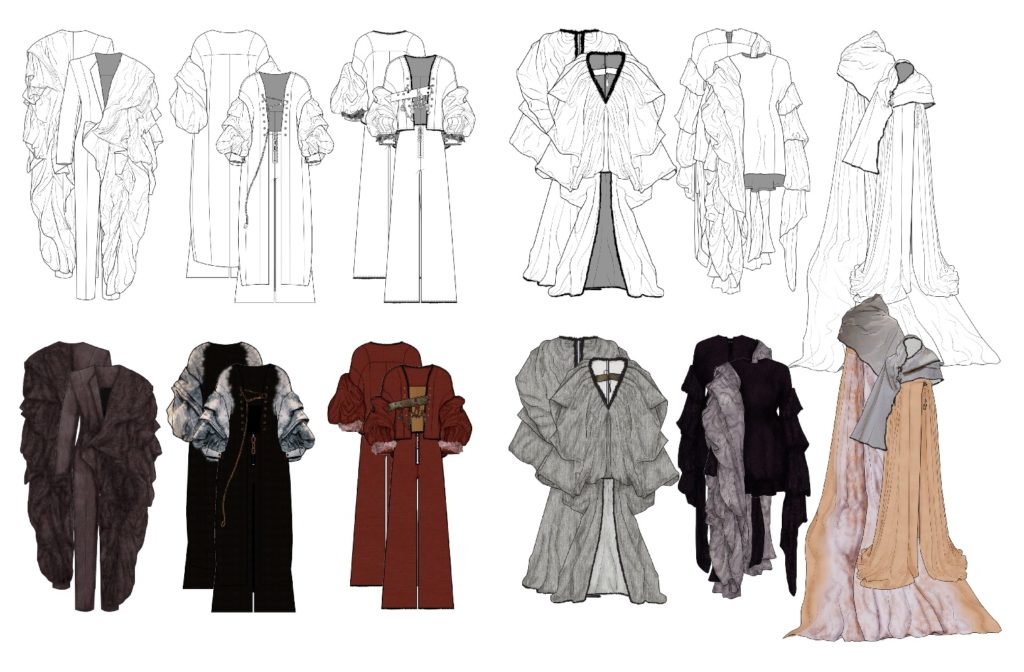
Please summarize your professional career in 1 to 3 sentences; what should everyone know about you?
OM: Graduate from the Central Saint Martins BA(Hons) Womenswear Design course with experience in luxury ready-to-wear women’s woven, denim, leather and shearling design and production, in both London and New York.
Describe what you do?
OM: I have worked assisting Creative Directors, Senior Designers and Production Managers to design and create their collections from start to finish, including but not limited to research, sketching, pattern cutting, draping, toiling, textile sampling, fittings, tech drawings, digital print & embroidery development, tech packs, styling, factory production liaising, keeping PLM systems up-to-date, walking through patterns and tech packs with factory managers, QC, packing and post-production marketing/sales – both web-based and in person.
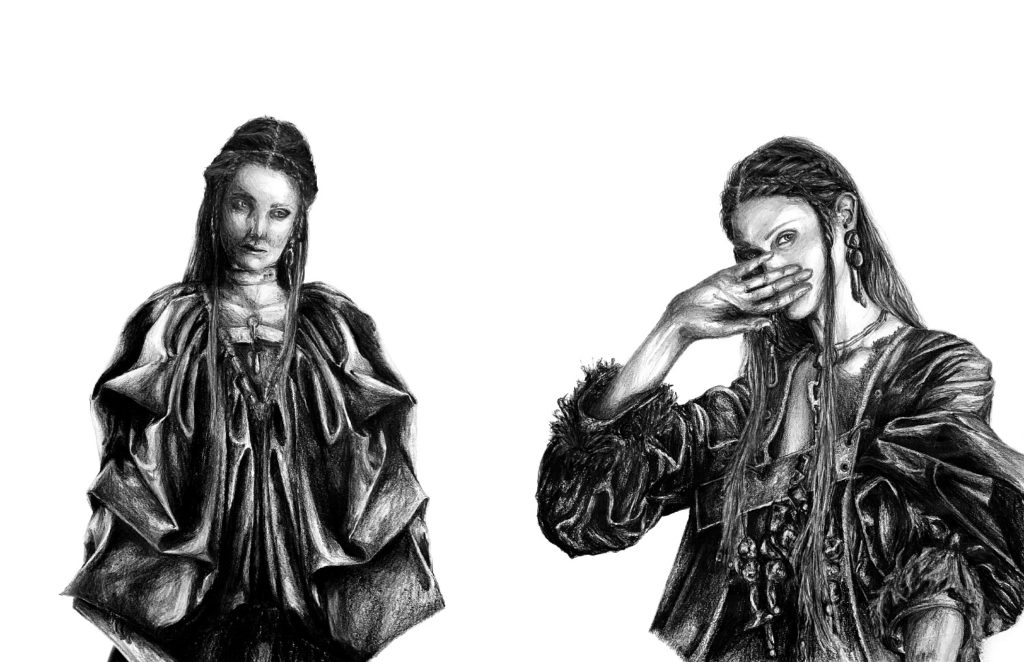
Why did you choose to be a designer?
OM: I remember discovering the work of Alexander McQueen and John Galliano at Dior; I had never experienced art in such an engulfing but accessible way – clothing is something we can all relate to. I love when brands allow you to escape into their universe – whether it be through their runway shows, lookbooks, stores, etc. At the heart of most authentic brands is a designer who is generally down to earth, using their platform to project a vision to aspire to.
What steps did you take to become a designer?
OM: I moved to London when I turned 18, built a portfolio on a short art course and applied to Central Saint Martins for the BA womenswear design course. It was a very intense, multidisciplinary course that focused more on creating ‘art on the body’ rather than garment design and construction, which in one way was incredible to be free to create without boundaries and develop an artistic viewpoint. However, I did struggle without some of the technical skills that weren’t taught but expected of you, and I was one of the youngest students amongst a very international group of people who had trained as tailors, had previous design/fashion degrees, etc. I decided to take a year out before my final year; I interned at Vivienne Westwood in London then took 4 months out to solo backpack through Asia, before moving to New York to intern at Derek Lam for the rest of the year. Those 18 months brought me back to the reality of what fashion design is and trained me with the professional technical skills needed – I also gained an additional Graduate Diploma in Professional Studies for that year. After graduating with honors, I worked as a Design and Production Assistant at Karl Donoghue in London. My time there exposed me to the processes of working with leather, shearling and fur. I have developed a deep appreciation for the craftsmanship that goes into leather production from the tanneries to the final products. Leather is such an important part of many brands’ collections and having an understanding of working with it is essential. Many people aren’t fortunate enough to get such hands-on exposure working with this beautiful material and the history that comes with it.
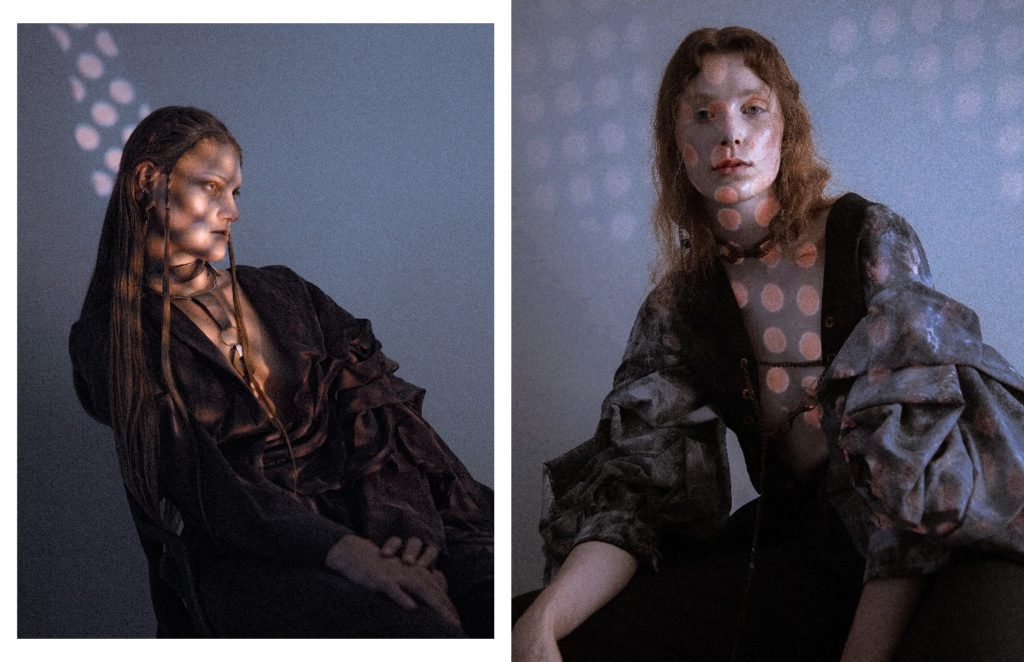
What is the best/most challenging part of your job?
OM: The best part of the development process would learning new skill/techniques – on days I have spent in leather factories I got to work with masters of their craft who loved sharing their knowledge with because I was eager to learn.
The best part of creating is seeing someone try on your work and their body language changes – they feel better/more confident. Or someone seeing something you have created and having a reaction to it.
The most challenging part can be staring at/working on something for so long you can’t tell if you like it or not anymore, or if your original thought was better. Or having to compromise your design so much it becomes unrecognizable.
If you weren’t a designer what would you be?
OM: I would have loved to have been a fashion curator at a museum – getting into museum archives and researching/documenting vintage garments is one of the best parts of the research/inspiration section of the design process. At CSM we were very fortunate to have great connections with museums, like the Victoria & Albert Museum, who let us into their archives to study work you wouldn’t even think was available – for example, the original sketches and figure studies of now world-renowned designers when they themselves were at art school.
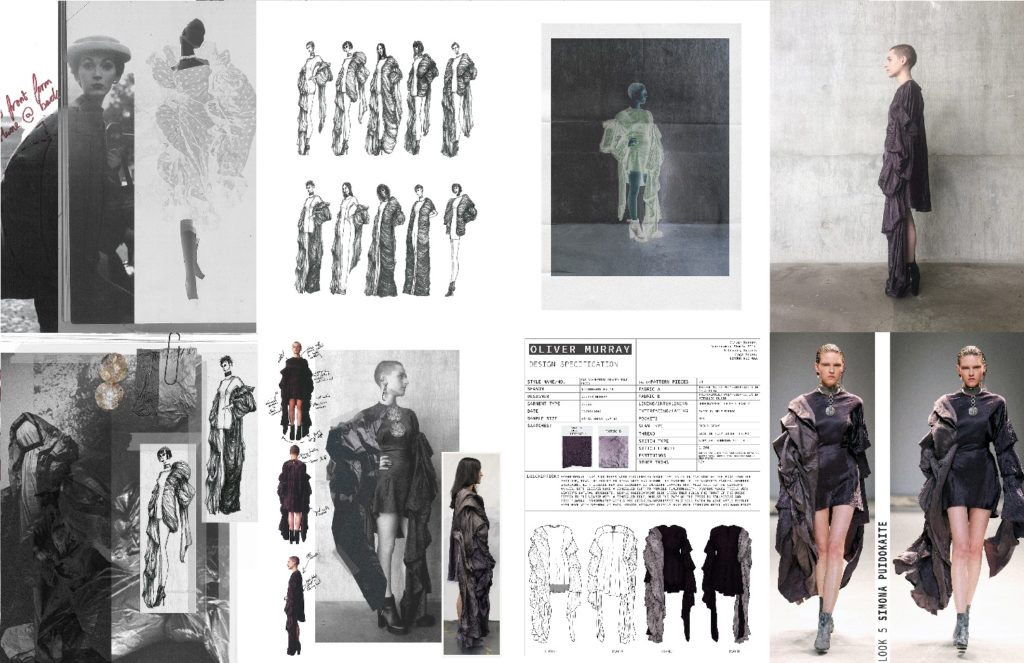
How did you get started in design?
OM: When I first moved to London I undertook a 1 year art course to build my portfolio for CSM. I had such inspiring tutors who really helped to change the way I thought about design; breaking down the process and the presentation of it. One tutor had presented her MA work by making and then taking apart a wedding dress and laying every thread side-by-side on the ground, documenting the whole process and demanding the onlookers to question what the whole thing was really worth. I do believe this kind of ‘out-of-the-box’ thinking is what pushes the fashion industry forward, and it definitely set me up for CSM where you are questioned about every decision you make; research and development is often more important than the final product – every unoriginal image in your sketchbook needs to have a good reason to be there – no chaotic moodboards that don’t really say anything. My graduate collection research and development is made up of about 80% of my own photography and drawings. The remaining 20% are vital points of inspiration that directed my own documentation.
What do you like about what you do?
OM: On a more general level, I like that it is not a stagnant industry. Every year brings fresh perspectives and forces older brands to rethink and ‘keep up’. I like that fashion remains at the forefront of global discourse, it bridges a gap between the art world and everyone else, and with that it holds great power in presenting forward thinking ideals to the masses. People may deny it, but fashion reaches everyone. We all get dressed. We all make decisions on how to present ourselves. I find it funny when a designer presents something and people laugh, turn it into a meme and dismiss it, but a few years later every commercial retailer is producing a diluted version of it and selling it to thousands. To be a designer is to be part of the progression of society.
Personally, I love working with people who come from different backgrounds, with different skills and opinions, and producing something together that we would never have thought of alone.

What’s a common misconception people have about what you do?
OM: I find a lot of people have a misconception that everyone in fashion is rich/frivolous/superficial, spends all day posting annoying photos on Instagram at different events and doesn’t work hard. While that can be true of literally any person in any industry in the world, at the core of fashion is some of the hardest working people who haven’t got to where they are because their parents’ money/connections, can’t afford the designer clothes they’re surrounded by, and spend most of their time in the studio.
Where do you see yourself in 10 years?
OM: I’d hope to be in a senior design role at a respected, forward-thinking brand. Maybe I would want to launch my own by then.
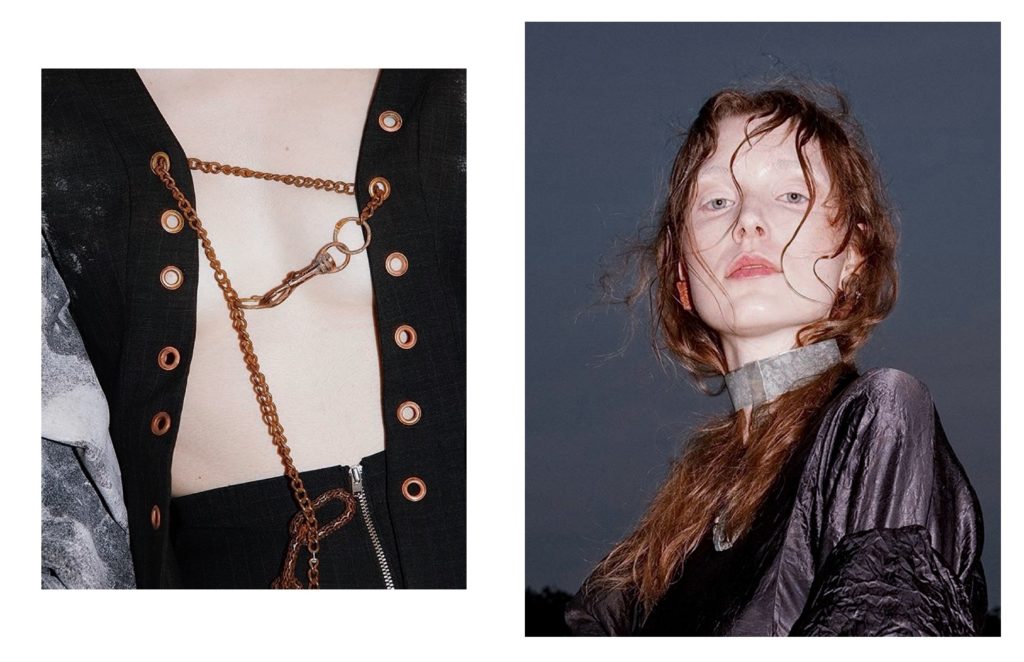
What sparked your interest in design?
OM: I always knew I wanted to go to art school from a young age. I loved drawing and painting. As I grew older I developed a more analytical opinion on art, which fed into design projects and pushing ideas forward. I liked that design had a more finalized ‘destination’ than fine art, and in fashion in particular I liked the speed of development and change that occurs – ideas move fast.
How has your work evolved since you began your career?
OM: My work has definitely progressed from a more abstract vision that captured form around the body to something more refined, tailored to a more traditional garment structure and commercially viable. My graduate collection was just that – a graduate collection from an art school exploring an idea and a feeling from a period of my life. I wasn’t launching a brand with it and I wouldn’t say it defines my design identity. However, if I was to start developing a new collection for myself, I would draw from aspects of it – there are elements of it that are intrinsically unique to my design instincts. My experience working for brands and my appreciation for ready-to-wear allows me to design in a commercial context with focus on ergonomic details and fabrication; collection range planning with multiple cohesive product color/style options; and production timelines. I love the subtle details in design now.
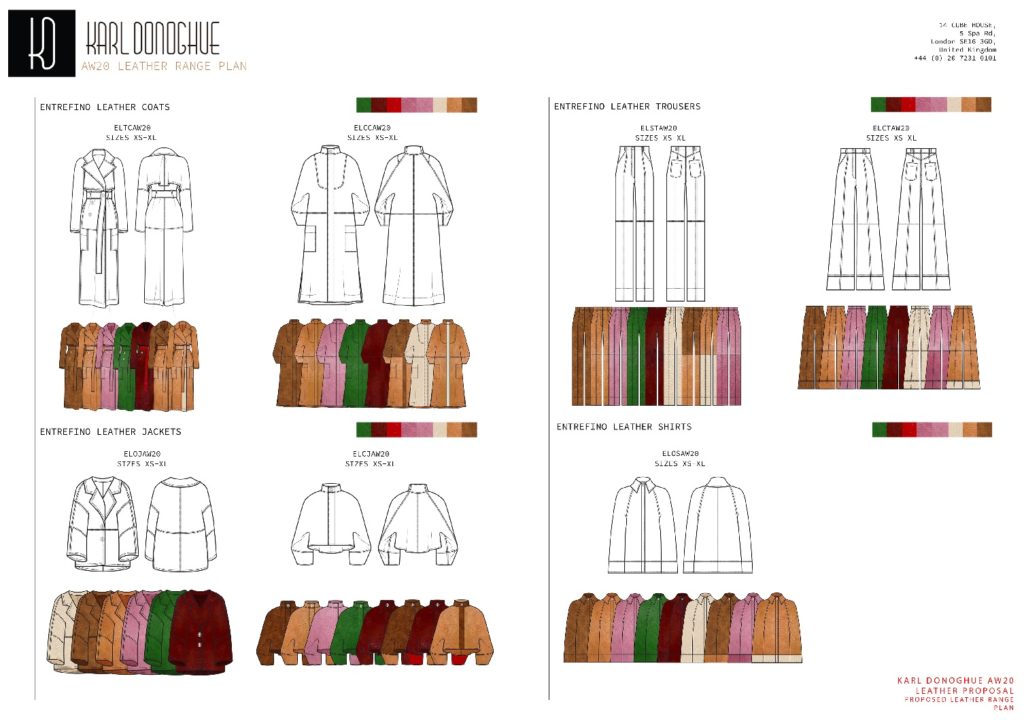
Are there any types of clothing/footwear/accessories that you avoid wearing?
OM: Anything with the brand’s name/logo/monogram/graphic plastered all over it is a big no for me. I don’t buy clothes that have to literally scream to the world where I bought them from. It’s a bit of a tasteless marketing ploy. Subtly can speak volumes.
What is the biggest lesson that you have learned since you started your career?
OM: Everyone’s point of view is different – listen to every idea but form your own critical opinion.
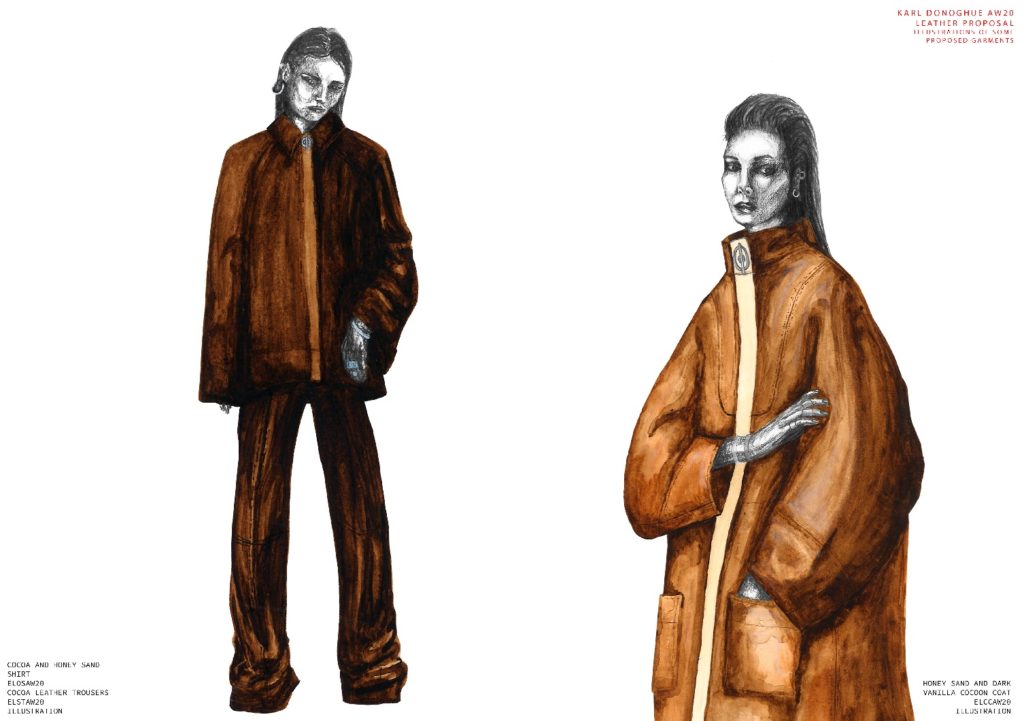
What advice would you give to young designers?
OM: I am a young designer so I don’t know if my advice counts, but I would say ask questions wherever possible. Many people, especially the incredibly talented technicians and craftsmen who make the products, are willing to offer their vast knowledge to you if you ask – and it’s these specialized tips that will enhance your design.
What would you like to achieve before the end of the year?
OM: I would like to be in a full-time position, working with a new team of creative people and expanding my knowledge and experience.
Oliver Murray is a contemporary luxury womenswear designer who studied at the renowned Central Saint Martins College of Art and Design and has experience assisting design teams in London and New York. Originally from the UK, he now resides permanently in NYC.
Chris Kidd is the owner of StyleCareers.com, StylePortfolios.com, StyleDispatch.com, FashionCareerFairs.com and FashionRetailCareers.com.



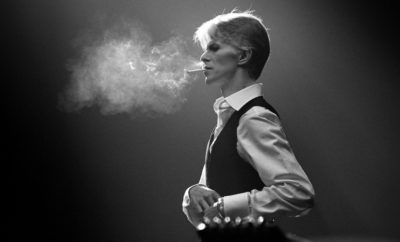



You must be logged in to post a comment Login